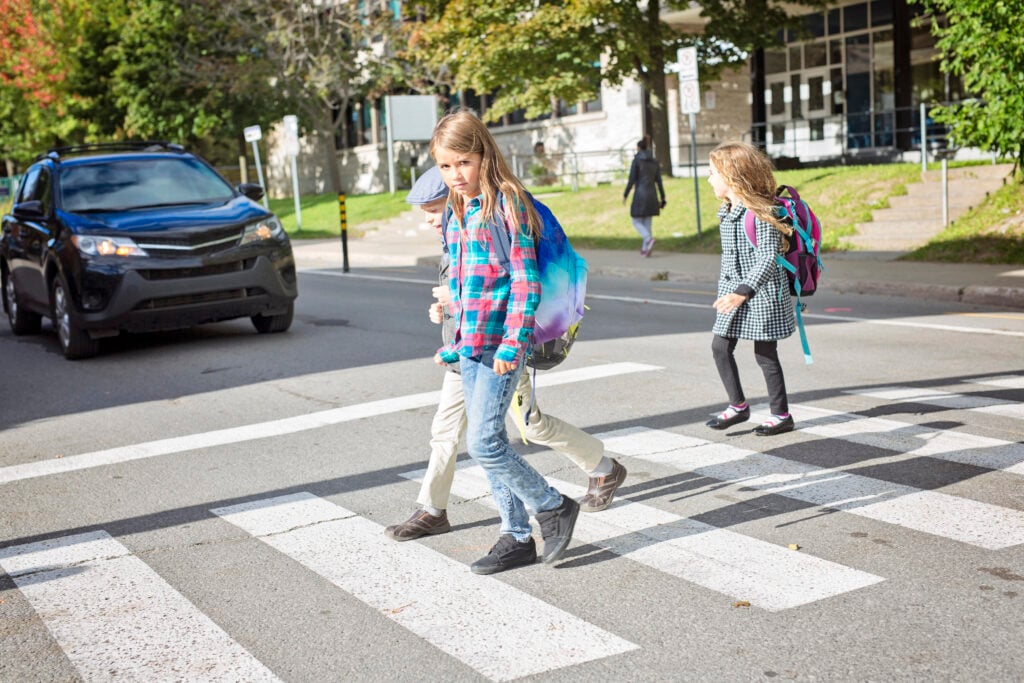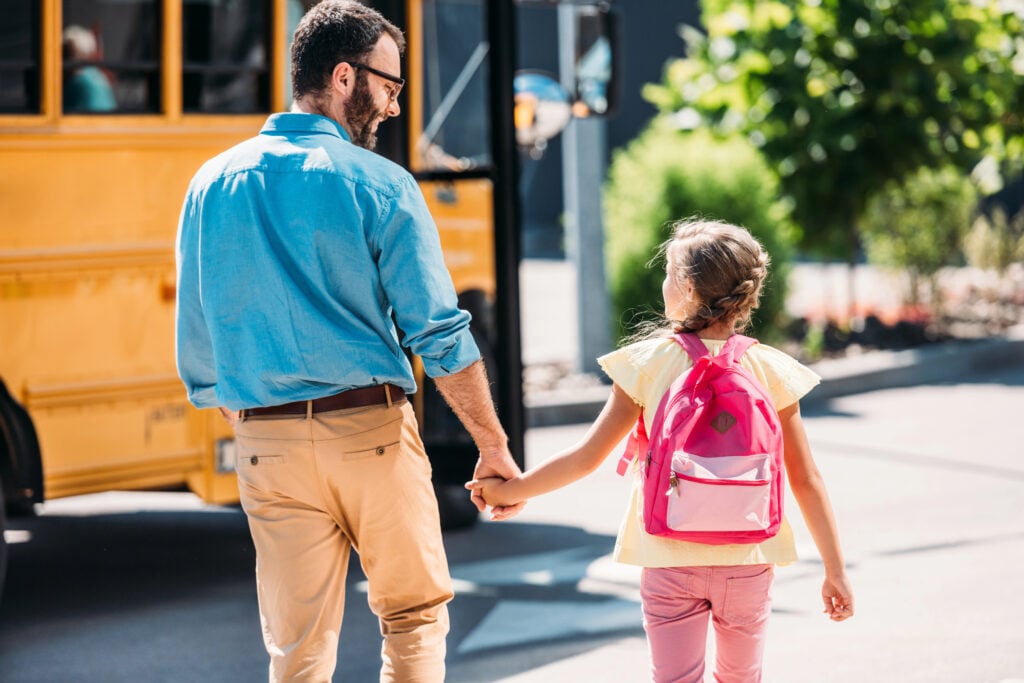
One of the most important things a parent does is prepare their child for independence, and one of the scariest (and most rewarding) aspects of parenting is letting a child have that independence.
We expend a lot of time and energy wondering when we’re supposed to let it happen. When can my child bathe without supervision? When can he use the stovetop while I’m in another room? When can he stay alone while I run to the store? When can he stay alone for multiple hours?
Even more fraught: When can my child be alone outside, away from our home, such as walking to school or the store?
There Is No Definitive Answer In The Law

A few states have laws or guidelines issued by their Department of Child and Family Services that help define when a child can be left at home alone, but there is no clear legislation in the U.S. determining when a child is ready to leave home by themselves.
This is understandable, since there is so much variety in terrain and infrastructure across the country, so that for one child, getting to school might involve walking a few blocks with crossing guards and controlled traffic, for another it might involve taking public transportation. For another, it might be miles of highway. The trip to the nearest store or playground could be even more questionable.
Unfortunately, this means that there’s no clear answer for when a parent can allow such a walk without risking legal consequences, and we’ve seen these consequences play out in recent decades.
Just for example, 11 Alive reported on Brittany Patterson, charged last year with reckless conduct over her 10-year-old son’s short walk.
“While she was attending to another child, her son, Soren, walked less than a mile from their Fannin County [Georgia] home to a gas station. Deputies returned the boy home and later arrested Patterson, citing her alleged lack of concern for his safety.”
Those charges have been dismissed, but her attorney notes that they could be refiled any time within two years of the alleged offense.
In North Carolina, parents Jessica Ivey and Samuele Jenkins just accepted a plea deal after being charged with neglect and felony involuntary manslaughter when their 7-year-old, walking with a 10-year-old sibling, was hit by a car and killed. WBTV reports that the plea deal, in which they accepted lesser charges and suspended sentences, was reached because the couple has other children who need them at home. The driver was not charged.
The legal summation appears to be that, despite there being no clear law delineating when a child can walk without their parents, a determination of fault can depend on the circumstances and outcomes.
What Do Child Development Experts Say?
The American Academy of Pediatrics has weighed in on the narrower question of when a child may walk to school alone.
This can differ from other walking in several ways, including that there are likely to be other kids walking the same route at the same time; that drivers may be more alert for children in school zones; and that there may be more adults taking responsibility for child safety on routes to school, although those factors are by no means guaranteed.
Still, the AAP’s recommendations may apply more broadly, as they describe age ten as the point when “children can begin to apply all the skills needed to safely navigate traffic environments on their own.”
Side note: This guidance was issued before Brittany Patterson’s arrest last year.
Even so, the AAP isn’t just declaring that as soon as a child reaches age 10, they can be set free to walk alone. Instead, it’s clear that this is the youngest they’re advising, for a child who has been taught the necessary skills, to be allowed.
Before allowing a child to walk alone, the AAP advises parents to practice the route, ensure their child knows to refuse rides from other adults, teach their child to cross at designated intersections, and remind their child that it is not safe to use a cell phone while walking.
What Other Factors Should A Parent Consider?

Your child should be able to state his name and the names of his parents, as well as his address and/or a phone number for a parent, and should have some guidance on what adults to trust in an emergency. What this means exactly is up to you. I want my child to be able to point out the homes of multiple people we trust along the route. Some people tell their child that if they must approach a stranger, to choose a mom with kids; others prefer to use a uniform as a designation that a person is safe.
Your child shouldn’t walk alone unless you feel confident in their ability to make the trip without getting too distracted. Remember Little Red Riding Hood? We’re looking for kids to stay on the safe path.
Your child’s comfort level is important. If they are not comfortable walking alone, they may not be ready.
The route matters. A route where your child will be joined by other children and parents walking is likely to be safer. A route with crosswalks and crossing guards is safer than one without. A route where you know and trust neighbors is a bonus.
Some schools also have rules regarding parental presence for dropping off and picking up. Even if your child is only walking to and from the bus stop, there may still be school rules that apply.
Local culture matters, too. If your child’s commute is past a lot of other parents who believe children should be given more freedom, and that parents are too helicopter-y these days, there’s less risk of someone calling Child Protective Services than if your NextDoor app is flooded with adults complaining about children playing unsupervised. If you’re unsure, it’s a good idea to get acquainted with some neighbors and gauge the general sentiment.
That doesn’t mean your neighbors get to dictate your parenting choices, but their attitudes can influence how smoothly those choices unfold.
How Will You Make The Final Decision?
Even when you make a decision based on expert advice and take into account your state’s legislation and your child’s abilities, there’s the possibility of a bad outcome, as there always is when making parenting decisions. Our job is always to make the best decisions possible with the information available to us.
That said, speaking with your child’s pediatrician, school staff, and even local law enforcement can give you a good sense of how child independence is treated in your area, and practicing with your child can help maximize safety.
Keep up regular conversations with your child about how their walks are going. Check in with other adults who have responsibility for them, and reassess as often as necessary.

